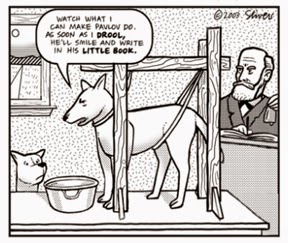Total global advertising placement is projected to exceed $716 billion next year, with as much as 70 percent of that total (exclusive of production) is being spent in North America. Marketers are investing more than 25 percent of this mix in digital advertising and social networks, and almost half invested in websites, branding, and strategy.
These were the same kinds of numbers I considered a few years ago as enrollment in the Public Relations Certificate Program at the University of Nevada, Las Vegas (UNLV) began to evaporate. Fewer and fewer working professionals were interested in a certificate program that seemed to exist within a vacuum, especially as public relations worked overtime to "own social" and thereby became owned by the strategic arms of marketing and communications.
While some saw the decline as waning interest in communications, I saw it as an inevitable shift away from public relations and toward integrated marketing communications‚ a field of study that was better equipped to address the challenges presented by digital advertising, social networks, shifting media patterns, and divided consumer attention. Yes, public relations in its purest form can still be invaluable, but continuing education students need to consider something more practical.
Retooling Integrated Marketing Communications at UNLV
For the better part of a year, several respected communicators in the field have been working with UNLV to develop what the next generation of integrated marketing communications might need. The resulting pinpointed four core classes and a variety of electives that could introduce or upgrade new skillsets for working professionals and small business owners.
Fundamentals of Integrated Marketing. Examine the core elements of integrated communications, including marketing research, segmentation, positioning, branding, analytics, and promotions.
Digital and Social Media Marketing. Learn key concepts of on- and offsite SEO, paid search marketing, online advertising, web analytics, email marketing, social media marketing, and online reputation management.
Consumer Behavior & Market Research. Examine why consumers behave the way they do and understand the practical marketing implications of that behavior. Use advanced market research methods to inform decisions.
Writing & Content Creation for Marketing. Communicate effectively by mastering the varied skills necessary to write for departments, businesses, and organizations across a variety of media.
While there about a dozen electives to support these core classes, these four provide enough of a foundation for those hoping to enter the field, those keeping up with trends, or those attempting to define their marketing budget. (The average successful company, by the way, invests 6-12 percent of their revenue into marketing.) And it's my hope anyone who enters the program will learn how precise, consistent, and persuasive messages to the right audience at the right time.
Once they have a foundation, professionals are always in a better position to discuss where technology intersects marketing and communication. In fact, just by looking at the twelve skill sets that are now in high demand for 2020, it becomes crystal clear where the brightest minds want to take communications — a place where analytics reimagines messaging and technology reimagines message delivery. It's an exciting time. Goodnight and good luck.
These were the same kinds of numbers I considered a few years ago as enrollment in the Public Relations Certificate Program at the University of Nevada, Las Vegas (UNLV) began to evaporate. Fewer and fewer working professionals were interested in a certificate program that seemed to exist within a vacuum, especially as public relations worked overtime to "own social" and thereby became owned by the strategic arms of marketing and communications.
While some saw the decline as waning interest in communications, I saw it as an inevitable shift away from public relations and toward integrated marketing communications‚ a field of study that was better equipped to address the challenges presented by digital advertising, social networks, shifting media patterns, and divided consumer attention. Yes, public relations in its purest form can still be invaluable, but continuing education students need to consider something more practical.
Retooling Integrated Marketing Communications at UNLV
For the better part of a year, several respected communicators in the field have been working with UNLV to develop what the next generation of integrated marketing communications might need. The resulting pinpointed four core classes and a variety of electives that could introduce or upgrade new skillsets for working professionals and small business owners.
Fundamentals of Integrated Marketing. Examine the core elements of integrated communications, including marketing research, segmentation, positioning, branding, analytics, and promotions.
Digital and Social Media Marketing. Learn key concepts of on- and offsite SEO, paid search marketing, online advertising, web analytics, email marketing, social media marketing, and online reputation management.
Consumer Behavior & Market Research. Examine why consumers behave the way they do and understand the practical marketing implications of that behavior. Use advanced market research methods to inform decisions.
Writing & Content Creation for Marketing. Communicate effectively by mastering the varied skills necessary to write for departments, businesses, and organizations across a variety of media.
While there about a dozen electives to support these core classes, these four provide enough of a foundation for those hoping to enter the field, those keeping up with trends, or those attempting to define their marketing budget. (The average successful company, by the way, invests 6-12 percent of their revenue into marketing.) And it's my hope anyone who enters the program will learn how precise, consistent, and persuasive messages to the right audience at the right time.
Once they have a foundation, professionals are always in a better position to discuss where technology intersects marketing and communication. In fact, just by looking at the twelve skill sets that are now in high demand for 2020, it becomes crystal clear where the brightest minds want to take communications — a place where analytics reimagines messaging and technology reimagines message delivery. It's an exciting time. Goodnight and good luck.



































